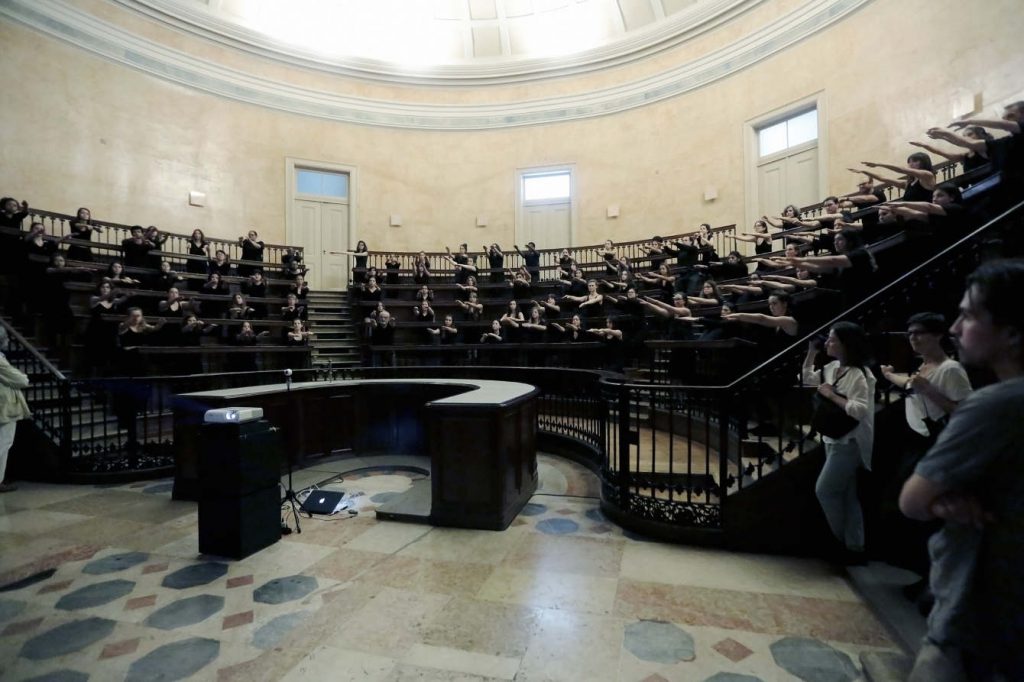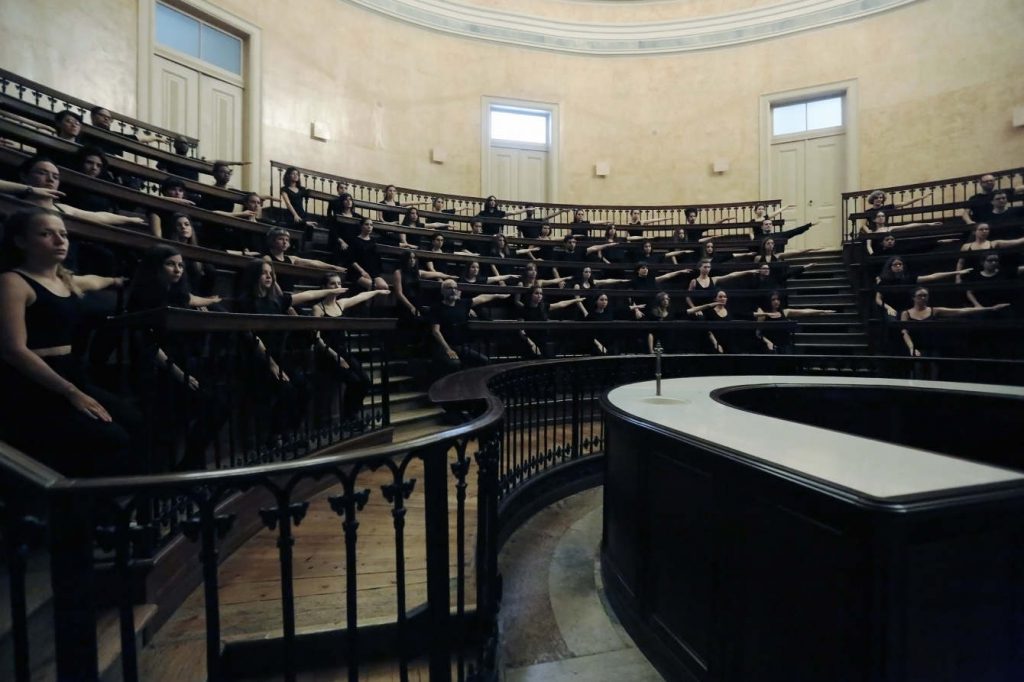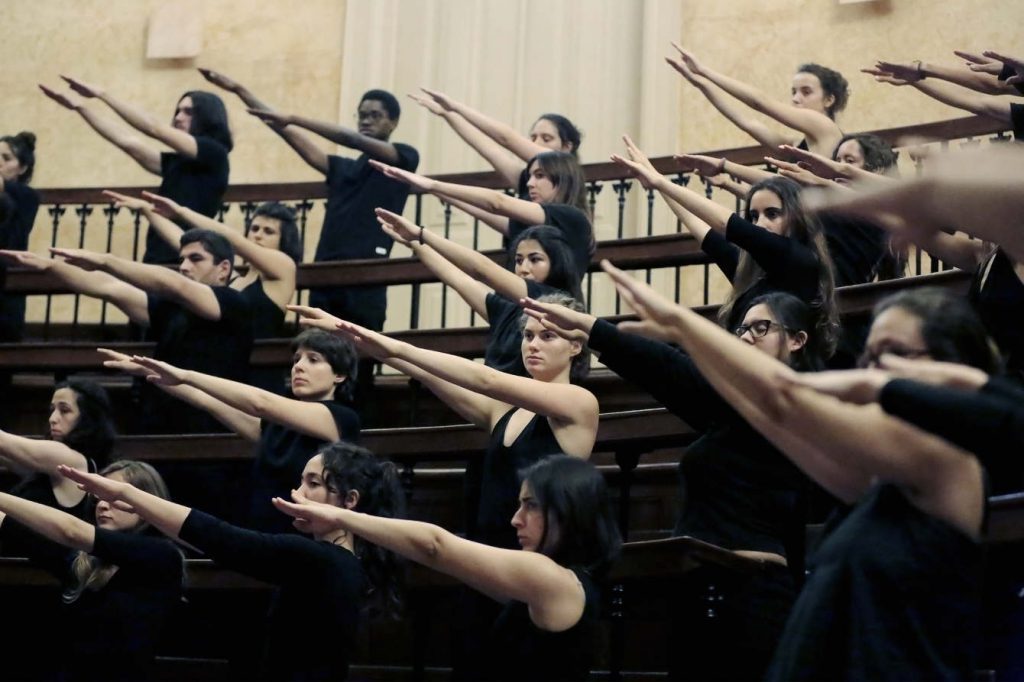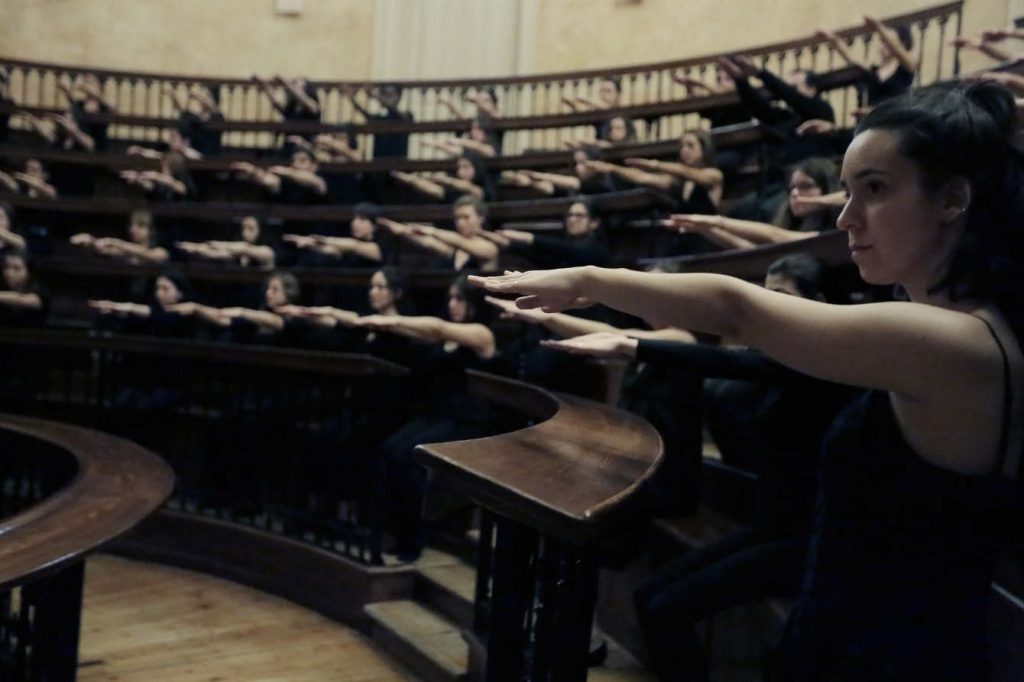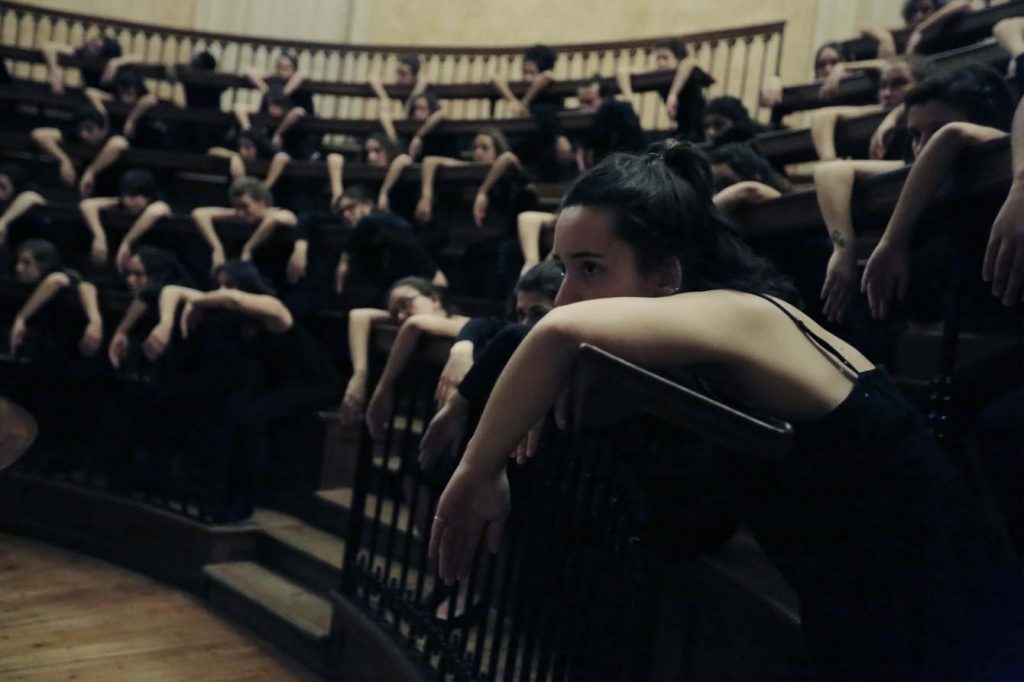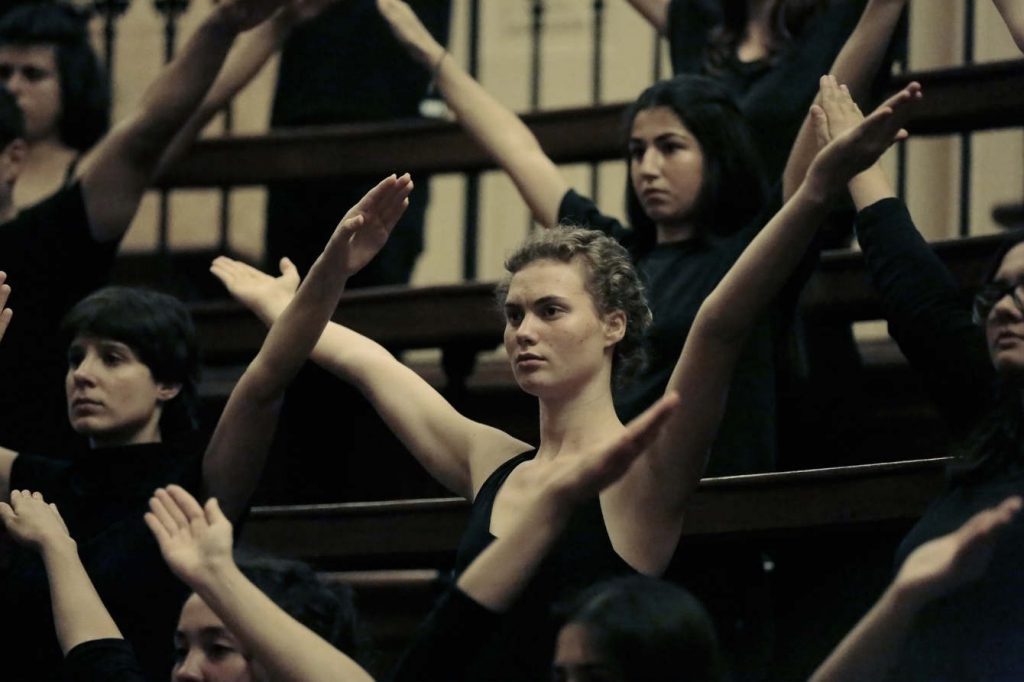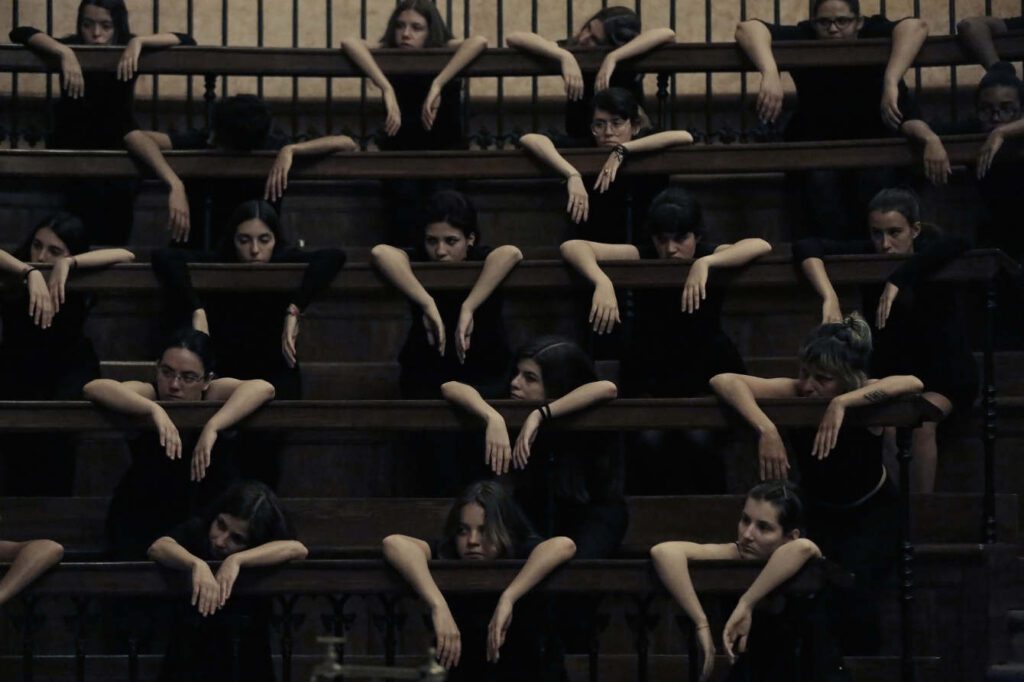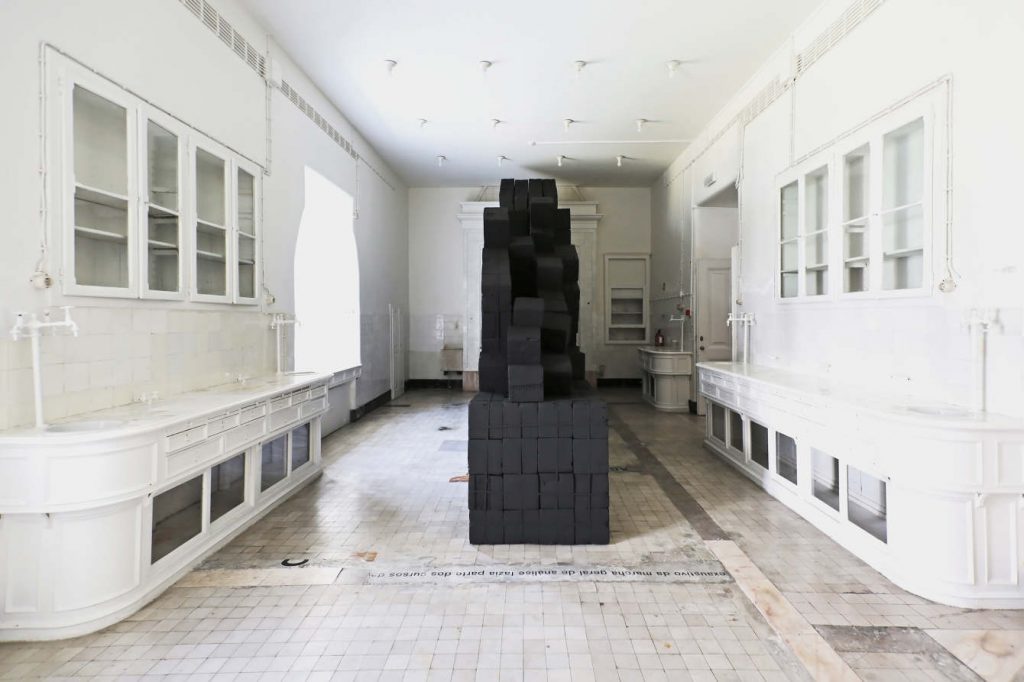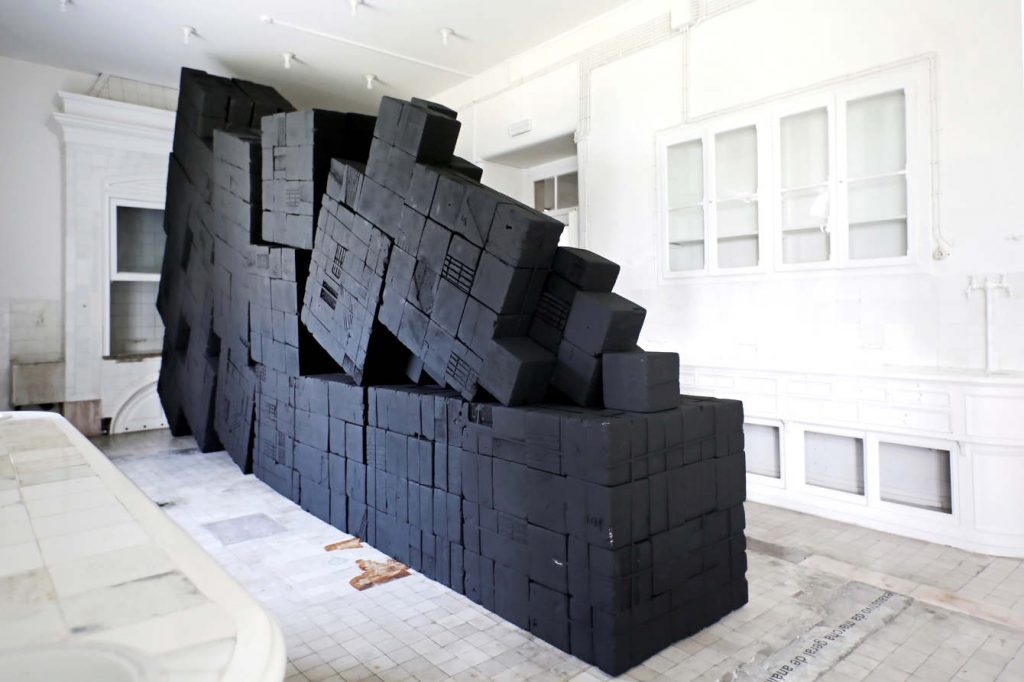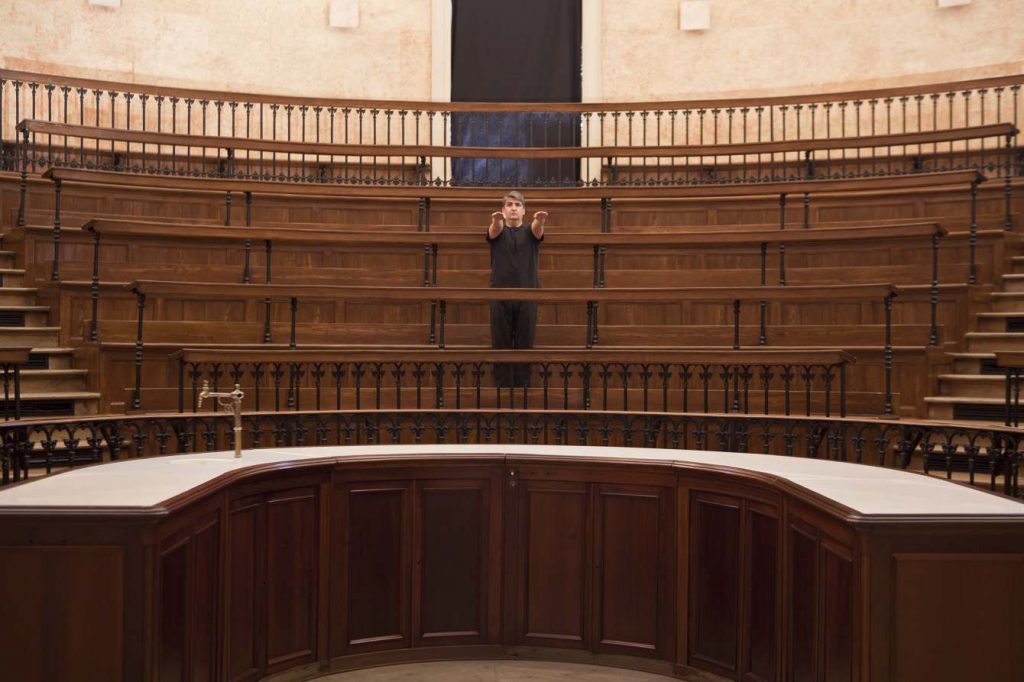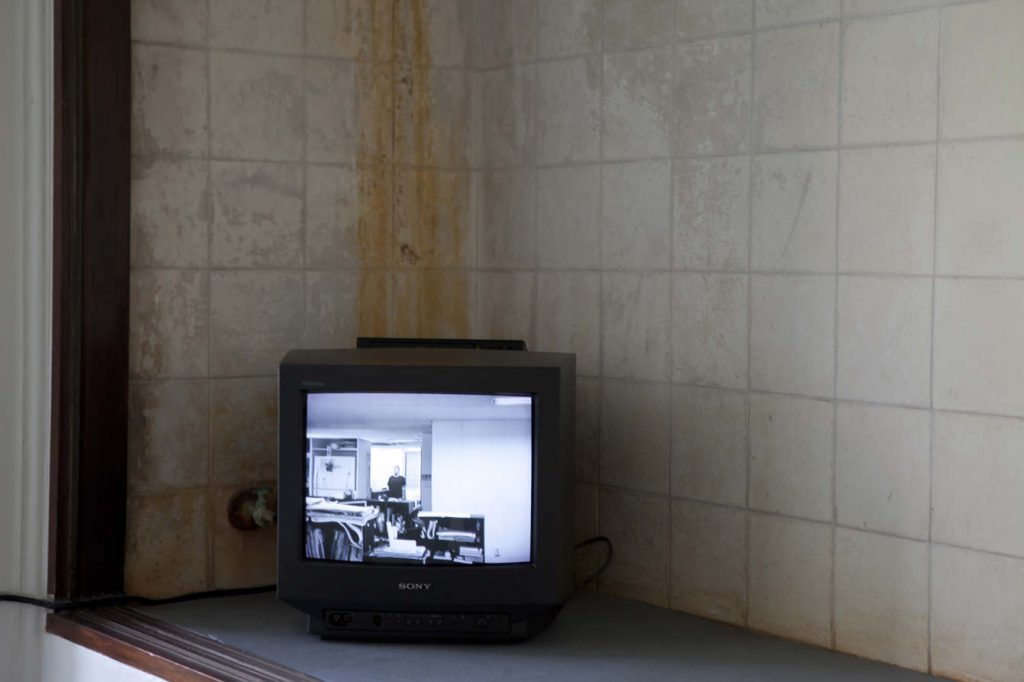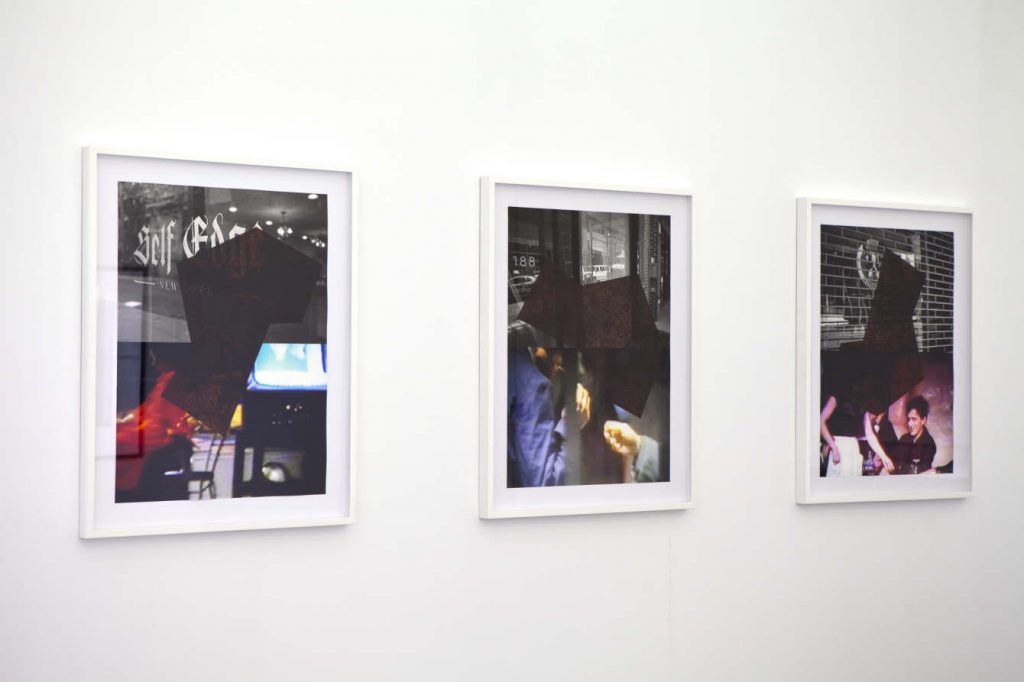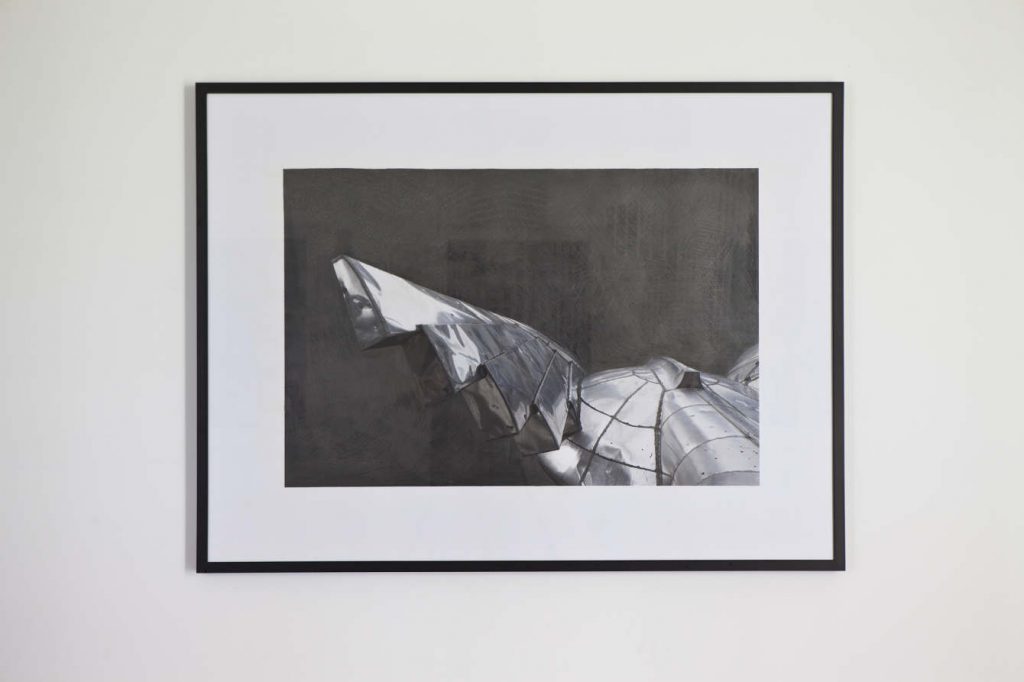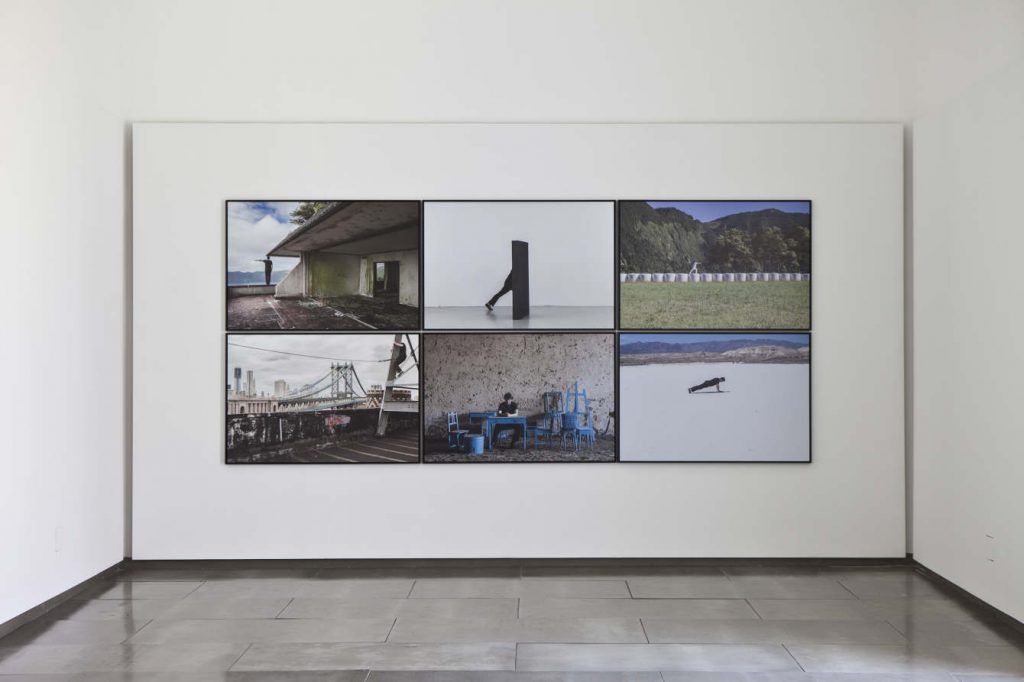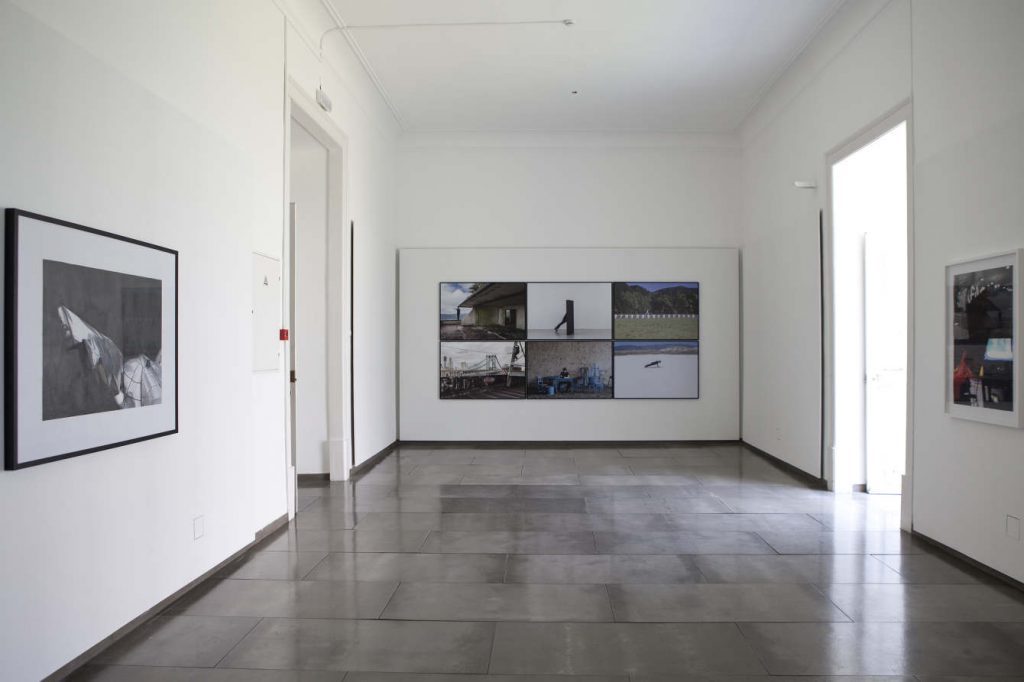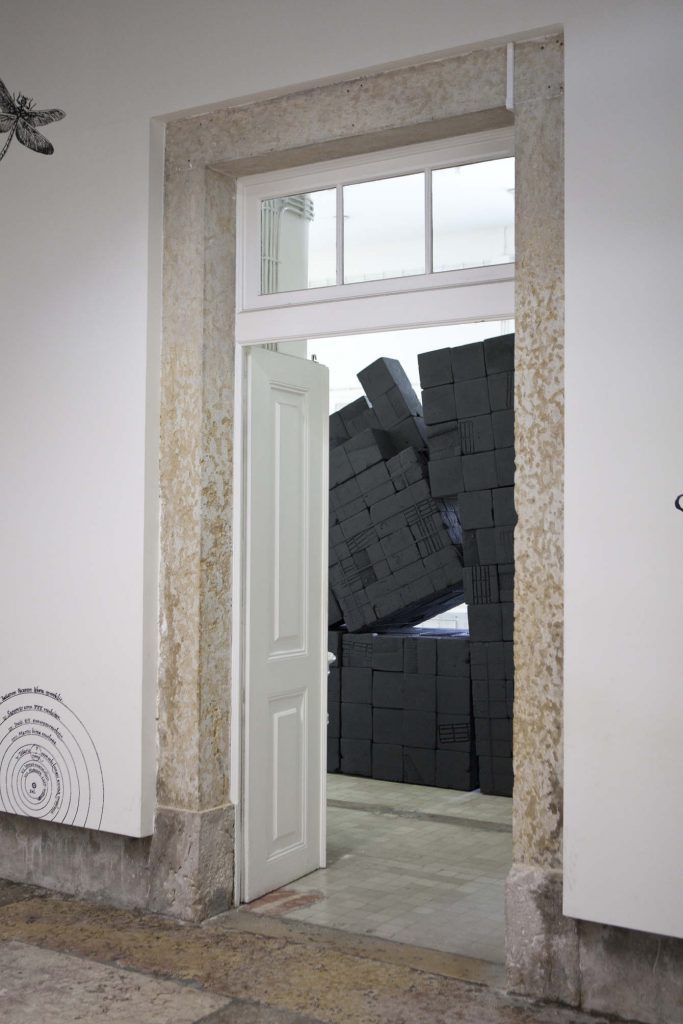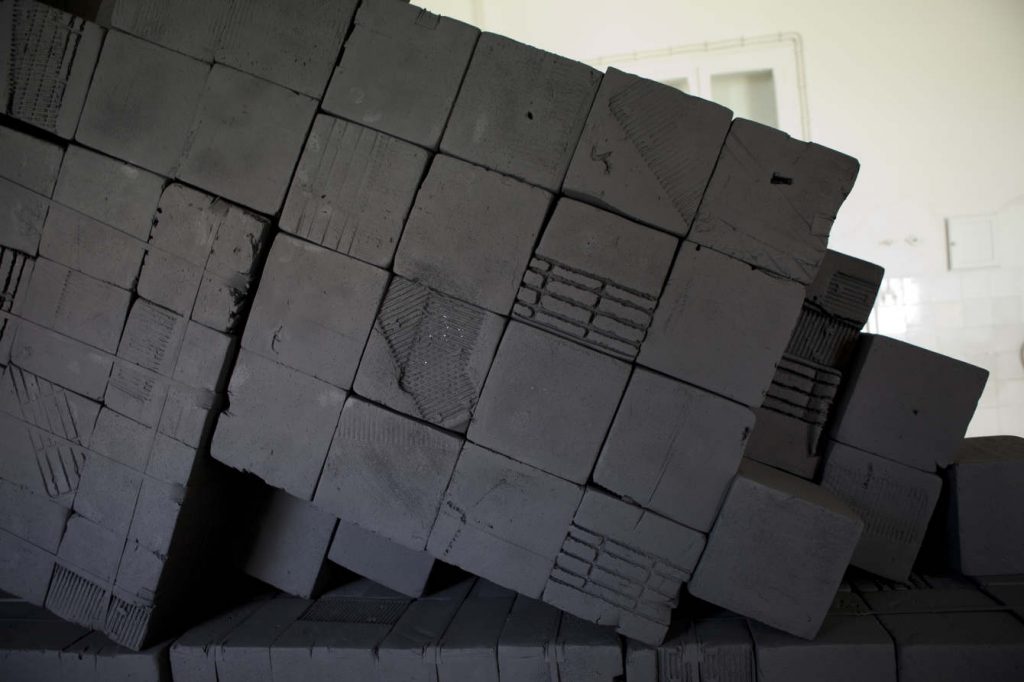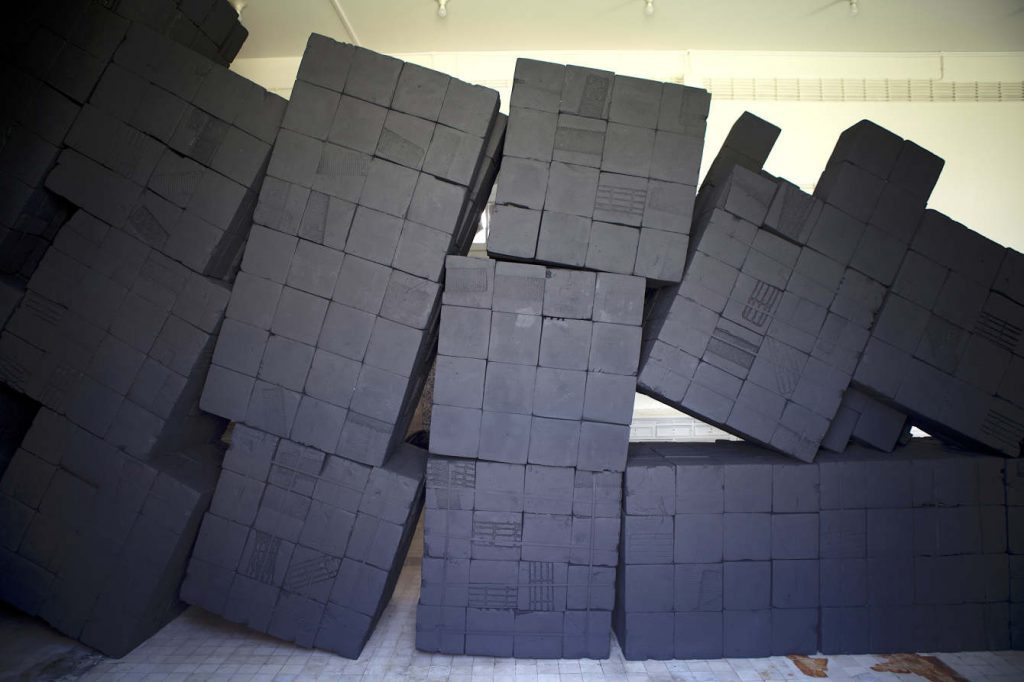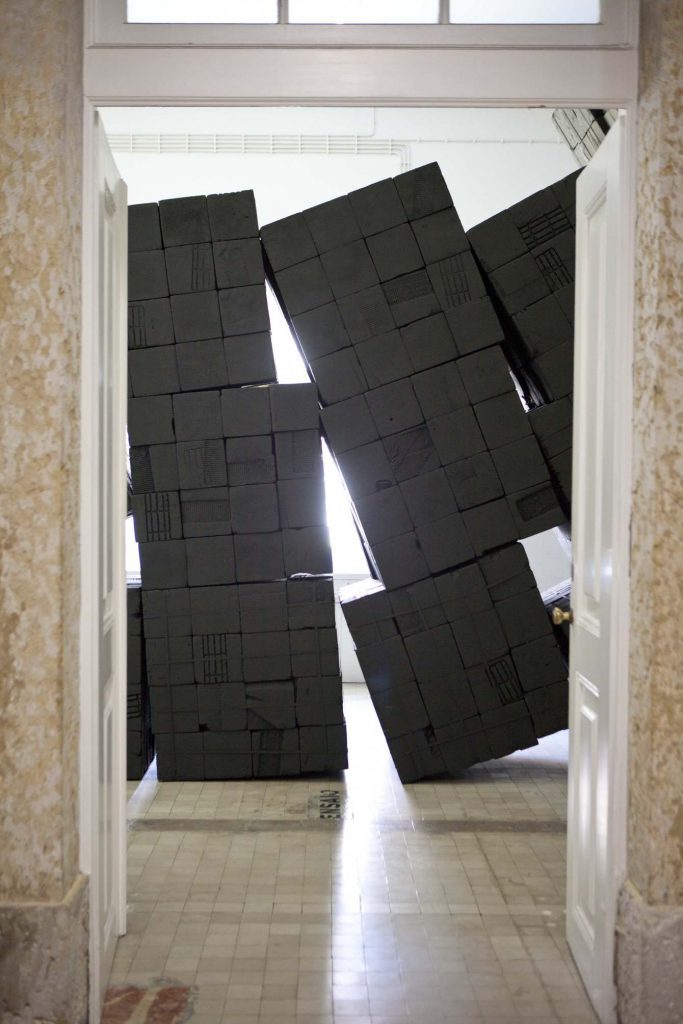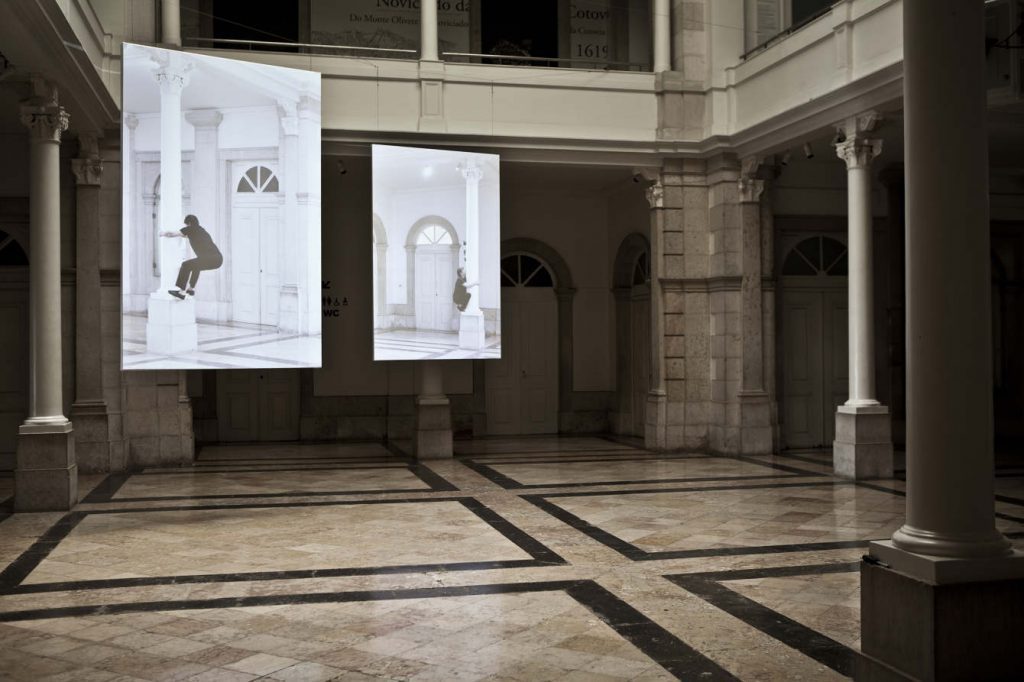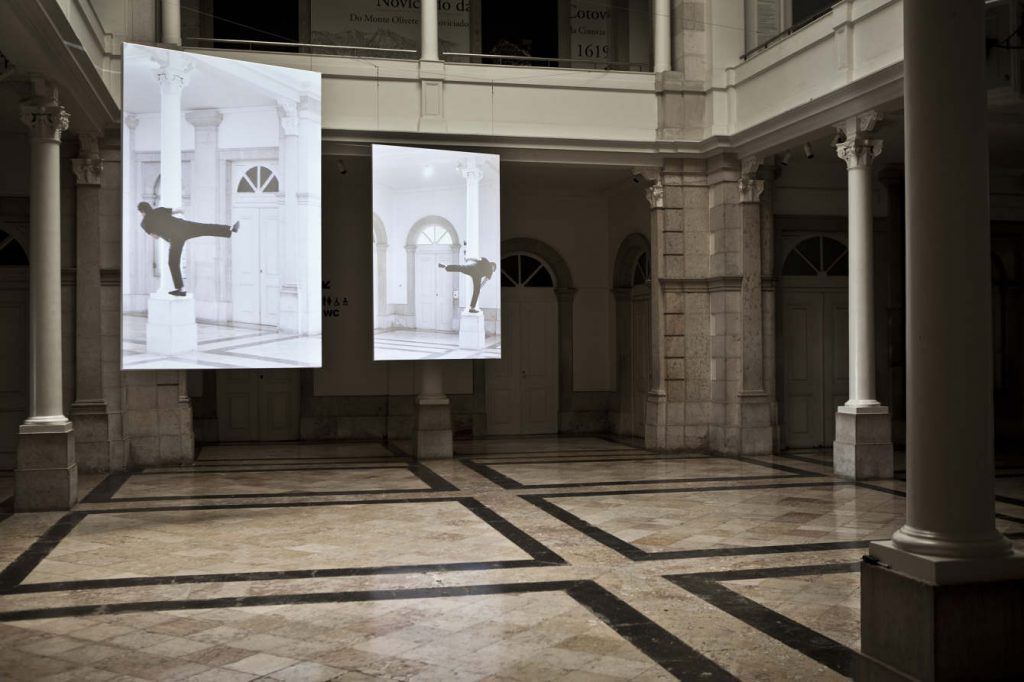2017 diorama_01 | Performance, Installation, Video, Photography, Drawing, National Museum of Natural History and Science, Lisbon
Curator: Nuno Crespo
text relatedInterview, July 2017
Nuno Crespo: This new show brings together works from different periods, all of them very revealing of your interest in architecture and space as materials for your artistic work. When did you start using architecture as a kind of text for the development of your projects?
Tomaz Hipólito: In my work, one way or another, space is the starting point for the existence and for the experience that reveals it.
Architecture, even if it has been there from a very early stage, started to appear in a more structured way the moment I had the opportunity of doing an exhaustive work of research, location scouting, and concrete action on a group of about thirty buildings in New York city. This extensive body of work, which includes video, photography, performance and drawing, resulted in an exhibition at the Emily Harvey Foundation, NY, (2011 rebuild_00) and was the seed for many new series that focus on architecture. Even more important, the idea of Mapping the Gesture gave me the opportunity of creating a new territory, an “Interval,” that can be placed or/and identified between subjectivity and the experience that we can extract from it.
NC: What do you mean by this idea of mapping the gesture?
TH: Establishing relations between the elements I work with, and to classify these relations in such a way that they can be inscribed in my “Interval.”
NC: What do you mean by interval?
TH: Everything is subjective, ultimately, reality is only revealed through presence or contemplation. When we change time, or replace the person or the experience, everything becomes different. When I work on a space, I always add something to it. In its essence, space does not change, it only becomes part of a broader legacy. The “Interval” is the amalgam of all this legacy of experiences. It exists in a parallel reality that sometimes comes across another experience.
NC: New York city plays a very important role in the development of these projects. How did you get there?
TH: I met Nathalie Anglès (the founder and director of Residency Unlimited NY) in 2010, in a group show at the Emily Harvey Foundation NY that had been organized by a group of artists in which I was included. After that, I made a thorough presentation of my work to Nathalie Anglès and Sebastien Sanz de Santa Maria, and was invited for a six-month residency in New York.
NC: When you talk about architecture, are you interested in the shapes created by architects or in the way space is used? You are not an architect, and have no formal education in art; what is your point of view when you look at architectural form and at artistic works that deal with space?
TH: Even though I studied architecture in Lisbon, I never concluded my studies and never worked in an architecture studio or project. But it was in university that I was made aware of these issues, and it was the course that drove me away from being an architect. My father was an architect and an urbanist. Drawing and architecture have been always present in my life.
I’m interested in the experience that results from the “occupation” of space. My own experience, preferably. I am physically attracted by the spaces, I love feeling them, dissecting them, to watch as they transform and/or how they influence my suggestions.
NC: How do you select the places you work with? You talk about physical attraction, but there are surely elements that are important in how you approach them.
TH: On the one hand, intuition, and on the other the need for new experiences or for a new experience in the same space.
NC: Can you differentiate how artists and architects occupy space?
TH: The artist raises problems; the architect solves them. Even if it’s formalized differently, the artistic object is where they coincide.
NC: This is a follow up to the last question: how do artists and the way they look at, transform, and act in the architectural space changes the way architects look at their own task?
TH: Artistic production (visual arts, cinema, dance, music…) and culture in general, will always be part of every creator’s universe, including the architect’s.
Because artistic works have no function, the artist has no limits and can explore the “new thing” with a freedom that is almost impossible for an architect to attain.
This becomes bidirectional when the architectural work is the starting point for the artist.
NC: What is behind this fascination artists have in the field of architecture as a field for their artistic work? Can you understand it?
TH: A shelter, a cave, or even just a shadow… it is something that comes from the dawn of our existence and, somehow, is inseparable from our survival, and thus our existence… It is an existential issue.
NC: This show brings together a series of works from different periods, all bearing this very enigmatic name, Diorama. Can you explain how is this optical device related to your works?
TH: It is not a name, Diorama is the motto for the show. This group of works should be seen as a kind of diorama because it allows us to explore the specificity of this place throughout its remarkable history, architecture, and functions (museological, laboratorial, research, etc.)
NC: The word diorama can have many meanings. It can mean a three-dimensional model that represents a natural or historical scene, which was very popular in 19th century museums, or, more recently, it became the name of a miniature optical device that allows us to see a landscape. In both cases, it’s a naturalist and realist mode of representation. How do these systems of representation interest you?
TH: The “diorama” I’m interested in is the one that represents the real in the broadest sense. When we see a lion attacking a gazelle in a “diorama,” we read the scene in a way that goes far beyond the food chain, and includes fauna/flora, habitat and/or ecosystem… All this is presented to us in a single “frame.”
NC: A frame?
TH: Yes, because in the case of the “diorama” I’m thinking about, very common in museums such as this one, a certain action is at stake: a kind of film. In this show, I was not interested in working this idea of continuity, but in focusing on a single moment.
NC: So, you want to focus on moments of the experience of this museum?
TH: Yes, exactly. That’s why the exhibition’s title is not “diorama,” but 2017 diorama_01. I wanted an unequivocal reference to the time interval during which these works were developed.
NC: It’s not about using the museum simply as a venue or as an exhibition space, a kind of anonymous white cube, but about using it as an element in your creation.
TH: Not just that. I use space not just as an element in my work, but I also give my pieces back to the space that originated them: a work that represents the space where it is being shown. In this perspective, the Museum is a “diorama” of the visitor.
NC: Can you explain how does this happen in the different works?
TH: In the piece shown at the entrance, the visitor is confronted with the projection of a performance I did in that same place. The visitor cannot establish a relationship with that space as if it was empty, because it is “occupied.”
NC: The space is occupied by itself?
TH: Yes. Slightly different, but still within that same notion of entrance, in the Amphitheater the visitor comes across a group of interpreters that are doing a performance, which was also previously performed by me in that space, that makes it impossible for the visitor to “occupy” the Amphitheater. In these two cases, the visitor is in the Museum seeing a “diorama,” but in the experience in which the scene and the space are presented in the “diorama museum.”
NC: And in the other rooms?
TH: The installation, and the drawings and photographs in the laboratories around the cloister work a bit like a trompe-l’oeil of the site-specific pieces at the entrance and in the amphitheater, they open the door to a broader understanding of my work.
NC: You say that you are interested in a broad dimension of the representation of the real. How is this present in your pieces? Because at first glance your concerns seem to be focused on the issues that relate to the exploration of the space, of its occupation, construction, and experience.
TH: The representation of the real, not in its formal sense of the function of a “diorama,” but in the different layers that represent a whole, in the meaning of each one of those layers, and in how they influence each other. Contamination, inscription, superimposition, complementarity, among others, are exercises I’m interested in exploring within my work.
NC: We still haven’t talked about performance and about the role it plays in your work. Do the performances precede your work in photography, drawing, or installation?
TH: There is no specific order to my working process. When I’m starting a project, I do not know beforehand which is the medium I’ll be using to materialize it. Some of the issues I come across in my working process may suggest, for example, that drawing is more suitable in that particular case. Also, this drawing might appear to me during a performance, and then evolve into an installation and/or photograph.
They all have in common that nothing is predefined (closed), and that a step is followed by another (open). Maybe that’s why I revisit my previous series quite often.
Interview, July 2017
Nuno Crespo: This new show brings together works from different periods, all of them very revealing of your interest in architecture and space as materials for your artistic work. When did you start using architecture as a kind of text for the development of your projects?
Tomaz Hipólito: In my work, one way or another, space is the starting point for the existence and for the experience that reveals it.
Architecture, even if it has been there from a very early stage, started to appear in a more structured way the moment I had the opportunity of doing an exhaustive work of research, location scouting, and concrete action on a group of about thirty buildings in New York city. This extensive body of work, which includes video, photography, performance and drawing, resulted in an exhibition at the Emily Harvey Foundation, NY, (2011 rebuild_00) and was the seed for many new series that focus on architecture. Even more important, the idea of Mapping the Gesture gave me the opportunity of creating a new territory, an “Interval,” that can be placed or/and identified between subjectivity and the experience that we can extract from it.
NC: What do you mean by this idea of mapping the gesture?
TH: Establishing relations between the elements I work with, and to classify these relations in such a way that they can be inscribed in my “Interval.”
NC: What do you mean by interval?
TH: Everything is subjective, ultimately, reality is only revealed through presence or contemplation. When we change time, or replace the person or the experience, everything becomes different. When I work on a space, I always add something to it. In its essence, space does not change, it only becomes part of a broader legacy. The “Interval” is the amalgam of all this legacy of experiences. It exists in a parallel reality that sometimes comes across another experience.
NC: New York city plays a very important role in the development of these projects. How did you get there?
TH: I met Nathalie Anglès (the founder and director of Residency Unlimited NY) in 2010, in a group show at the Emily Harvey Foundation NY that had been organized by a group of artists in which I was included. After that, I made a thorough presentation of my work to Nathalie Anglès and Sebastien Sanz de Santa Maria, and was invited for a six-month residency in New York.
NC: When you talk about architecture, are you interested in the shapes created by architects or in the way space is used? You are not an architect, and have no formal education in art; what is your point of view when you look at architectural form and at artistic works that deal with space?
TH: Even though I studied architecture in Lisbon, I never concluded my studies and never worked in an architecture studio or project. But it was in university that I was made aware of these issues, and it was the course that drove me away from being an architect. My father was an architect and an urbanist. Drawing and architecture have been always present in my life.
I’m interested in the experience that results from the “occupation” of space. My own experience, preferably. I am physically attracted by the spaces, I love feeling them, dissecting them, to watch as they transform and/or how they influence my suggestions.
NC: How do you select the places you work with? You talk about physical attraction, but there are surely elements that are important in how you approach them.
TH: On the one hand, intuition, and on the other the need for new experiences or for a new experience in the same space.
NC: Can you differentiate how artists and architects occupy space?
TH: The artist raises problems; the architect solves them. Even if it’s formalized differently, the artistic object is where they coincide.
NC: This is a follow up to the last question: how do artists and the way they look at, transform, and act in the architectural space changes the way architects look at their own task?
TH: Artistic production (visual arts, cinema, dance, music…) and culture in general, will always be part of every creator’s universe, including the architect’s.
Because artistic works have no function, the artist has no limits and can explore the “new thing” with a freedom that is almost impossible for an architect to attain.
This becomes bidirectional when the architectural work is the starting point for the artist.
NC: What is behind this fascination artists have in the field of architecture as a field for their artistic work? Can you understand it?
TH: A shelter, a cave, or even just a shadow… it is something that comes from the dawn of our existence and, somehow, is inseparable from our survival, and thus our existence… It is an existential issue.
NC: This show brings together a series of works from different periods, all bearing this very enigmatic name, Diorama. Can you explain how is this optical device related to your works?
TH: It is not a name, Diorama is the motto for the show. This group of works should be seen as a kind of diorama because it allows us to explore the specificity of this place throughout its remarkable history, architecture, and functions (museological, laboratorial, research, etc.)
NC: The word diorama can have many meanings. It can mean a three-dimensional model that represents a natural or historical scene, which was very popular in 19th century museums, or, more recently, it became the name of a miniature optical device that allows us to see a landscape. In both cases, it’s a naturalist and realist mode of representation. How do these systems of representation interest you?
TH: The “diorama” I’m interested in is the one that represents the real in the broadest sense. When we see a lion attacking a gazelle in a “diorama,” we read the scene in a way that goes far beyond the food chain, and includes fauna/flora, habitat and/or ecosystem… All this is presented to us in a single “frame.”
NC: A frame?
TH: Yes, because in the case of the “diorama” I’m thinking about, very common in museums such as this one, a certain action is at stake: a kind of film. In this show, I was not interested in working this idea of continuity, but in focusing on a single moment.
NC: So, you want to focus on moments of the experience of this museum?
TH: Yes, exactly. That’s why the exhibition’s title is not “diorama,” but 2017 diorama_01. I wanted an unequivocal reference to the time interval during which these works were developed.
NC: It’s not about using the museum simply as a venue or as an exhibition space, a kind of anonymous white cube, but about using it as an element in your creation.
TH: Not just that. I use space not just as an element in my work, but I also give my pieces back to the space that originated them: a work that represents the space where it is being shown. In this perspective, the Museum is a “diorama” of the visitor.
NC: Can you explain how does this happen in the different works?
TH: In the piece shown at the entrance, the visitor is confronted with the projection of a performance I did in that same place. The visitor cannot establish a relationship with that space as if it was empty, because it is “occupied.”
NC: The space is occupied by itself?
TH: Yes. Slightly different, but still within that same notion of entrance, in the Amphitheater the visitor comes across a group of interpreters that are doing a performance, which was also previously performed by me in that space, that makes it impossible for the visitor to “occupy” the Amphitheater. In these two cases, the visitor is in the Museum seeing a “diorama,” but in the experience in which the scene and the space are presented in the “diorama museum.”
NC: And in the other rooms?
TH: The installation, and the drawings and photographs in the laboratories around the cloister work a bit like a trompe-l’oeil of the site-specific pieces at the entrance and in the amphitheater, they open the door to a broader understanding of my work.
NC: You say that you are interested in a broad dimension of the representation of the real. How is this present in your pieces? Because at first glance your concerns seem to be focused on the issues that relate to the exploration of the space, of its occupation, construction, and experience.
TH: The representation of the real, not in its formal sense of the function of a “diorama,” but in the different layers that represent a whole, in the meaning of each one of those layers, and in how they influence each other. Contamination, inscription, superimposition, complementarity, among others, are exercises I’m interested in exploring within my work.
NC: We still haven’t talked about performance and about the role it plays in your work. Do the performances precede your work in photography, drawing, or installation?
TH: There is no specific order to my working process. When I’m starting a project, I do not know beforehand which is the medium I’ll be using to materialize it. Some of the issues I come across in my working process may suggest, for example, that drawing is more suitable in that particular case. Also, this drawing might appear to me during a performance, and then evolve into an installation and/or photograph.
They all have in common that nothing is predefined (closed), and that a step is followed by another (open). Maybe that’s why I revisit my previous series quite often.


